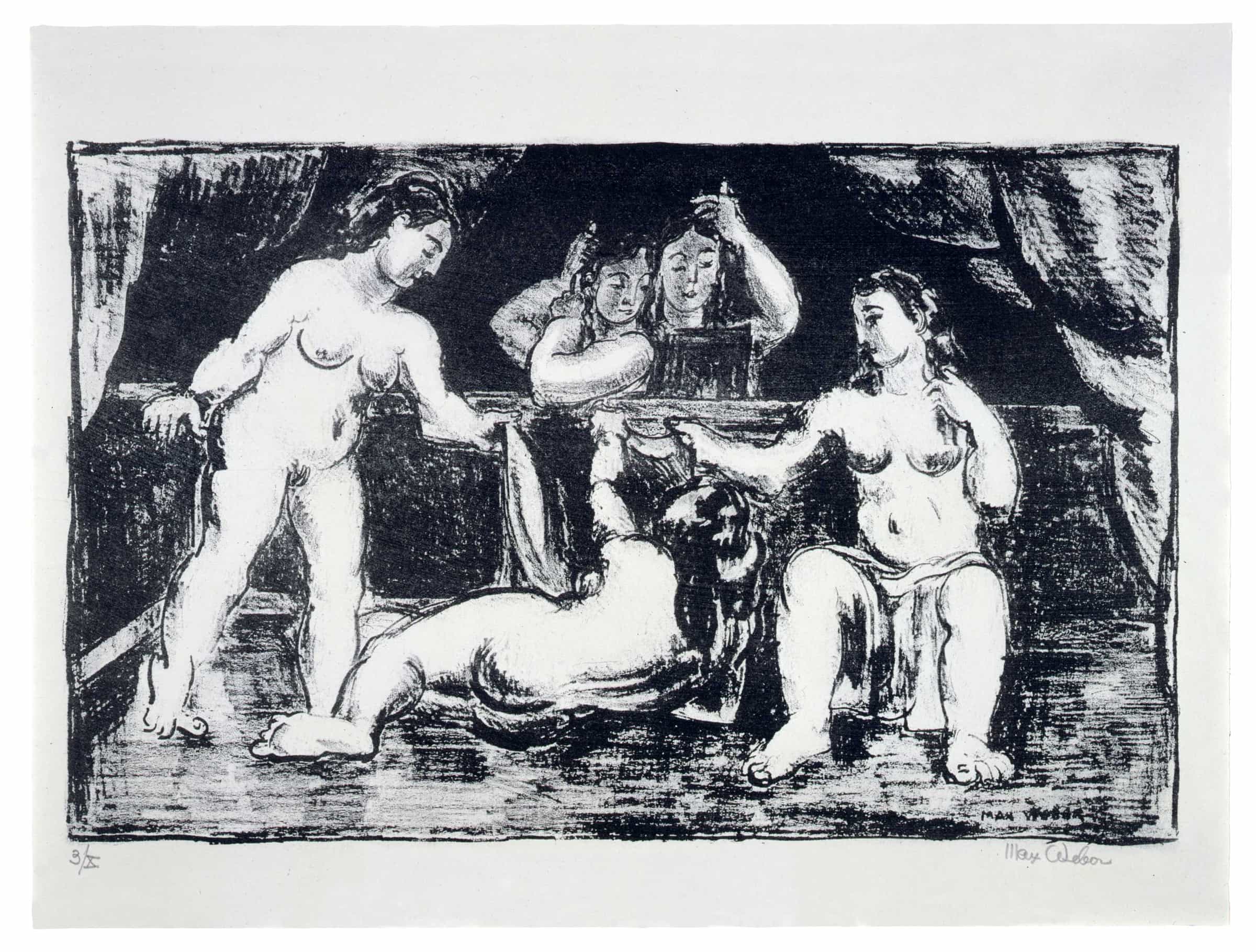About the Artist
Max Weber (1881-1961) emigrated from Russia to Brooklyn, New York in 1891. Raised by an Orthodox Jewish family, Weber attended the Pratt Institute from 1898-1900, and was heavily influenced by his professor Arthur Wesley Dow. Dow presented a fusion of old European masters and Far-Eastern art that inspired and intrigued the young Weber. Weber moved to Paris and studied at the Académie Julian from 1905-08. In Paris Weber established a friendship with Henri Rousseau, whom he helped to establish in the United States. Back in New York, Weber exhibited at Alfred Stieglitz’s 219 Gallery, and in 1916 published his modernist tract Essays in Art. Through his writings Weber presented his belief in instinct, the spiritual over the marterial, and stood by the mystical interpretations of art presented by Kandinsky.
Independently Weber experimented with printmaking early in his career, his most successful attempt a series of woodcuts from 1926. This series was published as Primitives: Poems and Woodcuts, the prints inspired by a visit to the Natural History Museum. Tatyana Grosman saw the reproductive possibilities in Weber’s work and approached him in the mid 1950s. Weber immediately agreed and asked for no fee, as the Grosmans were well known for their quality work. From 1956-58 the Grosmans published on screen print and reprinted four lithographic plates for Weber.
